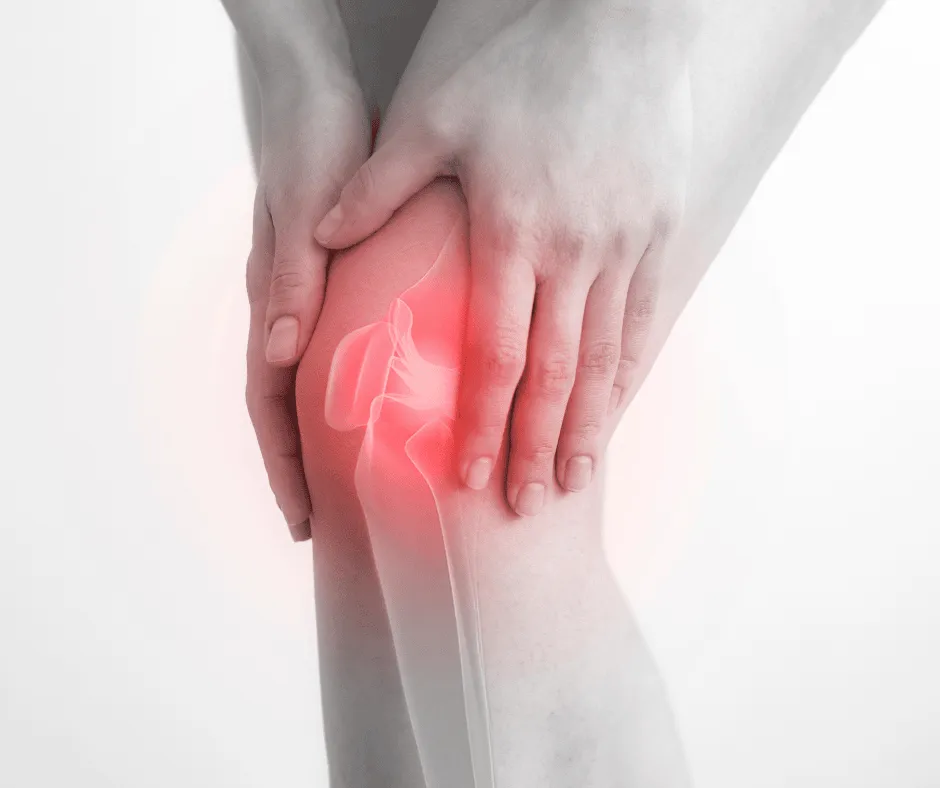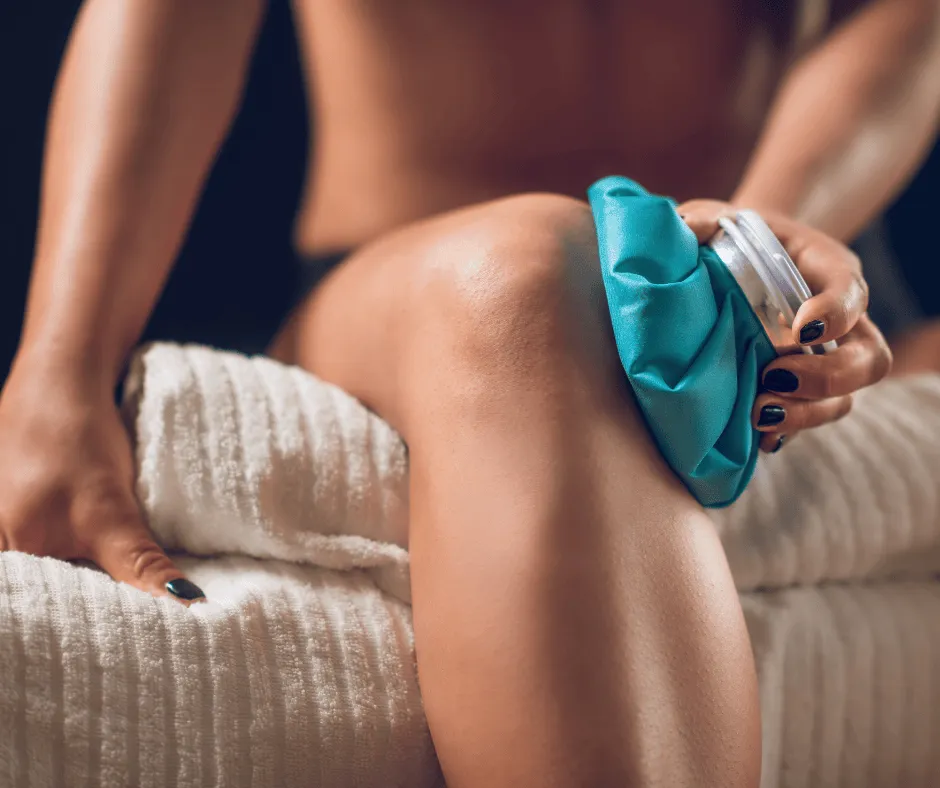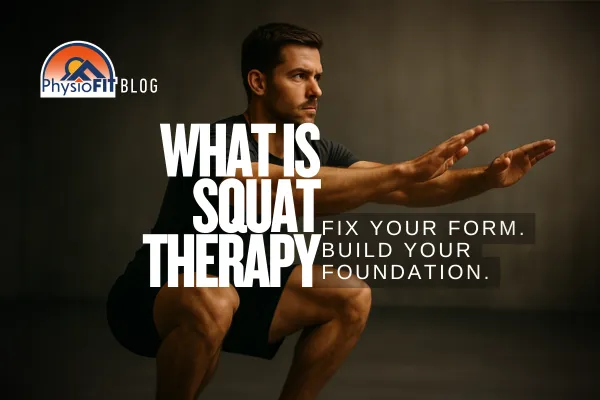Knee Pain Relief
Your Pathway to Knee Pain Relief
In the journey of life, knee pain can often emerge as an unwelcome companion, causing discomfort to people of various ages. From young athletes to active seniors, knee pain is a widespread issue that doesn't discriminate. It may be born out of a sudden injury, like a torn ligament or ruptured cartilage, or it could be the byproduct of a medical condition such as arthritis, gout, or even an infection.
Thankfully, minor knee pain often responds positively to strategies such as physical therapy, using knee braces, maintaining a healthy lifestyle, and can often provide significant relief. Here at PhysioFit, we understand that your journey to pain-free living is unique. We're here to provide customized, evidence-based treatments with a fitness-based approach to alleviate your knee pain effectively, helping you return to your everyday activities.
What You Should Know
Aging, injury, or recurring stress on the knee are the leading causes of knee pain.
Prevalent knee issues encompass sprains or strains in ligaments, cartilage tears, tendonitis, and arthritis.
A proper diagnosis of a knee problem involves a thorough evaluation from a professional or a medical examination, supplemented by diagnostic procedures such as MRIs, CT scans, X-rays, or arthroscopy.
Depending on the type and severity of the condition, both non-operative and surgical treatments are available to alleviate knee pain and problems.

4 of the Most Common Knee Problems
The knee, a complex and integral joint in the human body, can be prone to several issues. These complications often result from natural aging, consistent stress on the knee joint, or an injury. Let's discuss four of the most common knee problems:
Strained or Sprained Knee Ligaments and Muscles: Often the result of a sudden blow or twist to the knee, strains or sprains affect the ligaments and muscles in your knee. The typical symptoms include pain, swelling, and difficulty in walking.
Torn Cartilage: Our knees consist of menisci, which are pads of connective tissue acting as shock absorbers while providing stability. These can tear due to knee trauma, often coinciding with sprains. The usual treatment ranges from wearing a supportive brace to undergoing surgery, depending on the severity of the tear.
Tendonitis: This refers to the inflammation of tendons from overuse during activities like running, jumping, or cycling. An example is patellar tendonitis, also known as "jumper's knee." It's common among sports enthusiasts who partake in high-impact activities like basketball, where the repeated force of landing can strain the tendon.
Arthritis: Osteoarthritis, the most common type affecting the knee, is a degenerative condition where the joint cartilage wears away gradually, often affecting middle-aged and older individuals. Excessive stress on the joint, due to repeated injury or being overweight, can cause it. Another form, Rheumatoid arthritis, can cause inflammation and destruction of the knee cartilage, often affecting individuals at a younger age than osteoarthritis does.
Remember, if you resonate with any of the symptoms or conditions mentioned, we highly recommend making an appointment with us for a thorough evaluation and personalized treatment plan.
Preventing Knee Pain
While it might be impossible to completely avoid knee pain, these strategies can aid in averting injuries and slowing down joint wear:
Maintain a Balanced Weight: Keeping your weight in check is one of the most beneficial actions for your knees. Each extra pound exerts additional stress on your joints, heightening the likelihood of injuries and osteoarthritis.
Condition Yourself for Sports: To equip your muscles for the rigors of sports activities, incorporate conditioning exercises into your routine.
Aim for Perfection in Practice: Strive to perfect your technique and movement patterns for any sport or physical activity. Professional coaching can be valuable in this aspect.
Strengthen and Flex: Weak muscles often precipitate knee injuries. Strengthening your quadriceps and hamstrings, which are front and back muscles of your thighs, will help bolster your knee support. Engage in balance and stability training for more effective muscle coordination around your knees.
Remember, tight muscles can also lead to injuries, so flexibility exercises should be a regular part of your workout regime.
Exercise Wisely: If you're dealing with osteoarthritis, chronic knee pain, or frequent injuries, you may need to reconsider your exercise methods. Contemplate shifting to swimming, water aerobics, or other low-impact activities. At times, simply limiting high-impact activities can result in substantial relief.

Common Symptoms of Knee Pain
Inflammation and rigidity
A reddish hue and a warm feeling when touched
Sounds of popping or crunching
A sense of weakness or lack of stability
Difficulty in fully extending the knee
Remember, if you resonate with any of the symptoms or conditions mentioned, we highly recommend making an appointment with us for a thorough evaluation and personalized treatment plan.
Please Note: The information provided on our website is intended for general education and is not a substitute for professional medical advice. Each individual's situation and body is different. Therefore, what may work for one person may not work for another. We care about your well-being and advise you to reach out to us to discuss your specific needs before implementing any advice from our website.
Your Source for All Things Physical Therapy in Bend Oregon
The PhysioBlog

What Is Squat Therapy?
What is Squat Therapy?
Squat therapy is a focused training method designed to improve the motor control, posture, and mechanics of an individual’s squat. It is especially beneficial for those with immature squat patterns or poor squat mechanics. By using specific drills and feedback, squat therapy helps clients refine their movement patterns, enhancing stability, mobility, and overall performance.
Why is Squat Therapy Important?
The squat is a foundational movement in fitness and daily life, engaging multiple muscle groups and promoting functional strength. However, not everyone performs squats with optimal technique. Poor squat mechanics can lead to discomfort, inefficient movement, or even injury over time. Squat therapy addresses these issues by identifying and correcting faulty movement patterns, ensuring safer and more effective squatting.
Who Can Benefit from Squat Therapy?
You might benefit from squat therapy if:
Your air squat looks off: If your bodyweight squat (air squat) lacks depth, control, or symmetry, it could indicate deficiencies in mobility, stability, or motor control.
Your squat improves with load: Some individuals exhibit poor mechanics during bodyweight squats but demonstrate improved form when adding weight. This could suggest a lack of proprioception or engagement during lighter, unloaded movements.
Common issues observed:
Knees caving inward (valgus collapse)
Limited range of motion (e.g., shallow depth)
Poor balance or excessive forward lean
Lack of coordination or control
How Does Squat Therapy Work?
Squat therapy involves a combination of drills, cues, and tools to address deficiencies and retrain proper movement patterns. Key elements include:
Assessment:
Begin with observing the air squat. Look for common faults such as limited depth, instability, or asymmetry.
Compare the air squat to a loaded squat to identify discrepancies in mechanics.
Corrective Drills:
Wall squats: Perform squats facing a wall to encourage upright posture and proper knee tracking.
Box squats: Use a box or bench to guide depth and reinforce control.
Tempo squats to a target (our favorite!): refers to a squat drill where the individual performs squats at a controlled pace (tempo) while aiming to reach a specific target, such as a box, bench, or marker.
Controlled Tempo: The movement is intentionally slowed down, often broken into phases like a 3-second descent, a brief pause at the bottom, and a 1-second ascent. This slows the motion to enhance muscle engagement and motor control.
Targeted Depth: The target ensures consistency in squat depth, helping individuals practice reaching an ideal range of motion without collapsing or losing form.
Why It's a Favorite: This drill is versatile and addresses multiple issues, including depth consistency, posture, and strength. It also provides immediate feedback, as missing the target indicates a loss of control or improper technique.
Cueing and Feedback:
Use verbal or tactile cues to guide proper alignment and engagement.
Record and review videos to provide visual feedback on progress.
Recognizing Progress
As you work through squat therapy, improvements might include:
Increased squat depth without sacrificing posture or control
Improved knee tracking and stability
Greater confidence and comfort in the squat movement
Enhanced ability to transition these improvements to loaded movements
Final Thoughts
Squat therapy is an invaluable tool for anyone struggling with poor squat mechanics. Whether you’re a beginner looking to build a solid foundation or an experienced lifter aiming to refine your technique, this approach ensures that your squats are safe, efficient, and effective. By dedicating time to perfecting the fundamentals, you’ll set yourself up for long-term success in fitness and beyond.
Copyright PhysioFIT 2025 . All rights reserved


